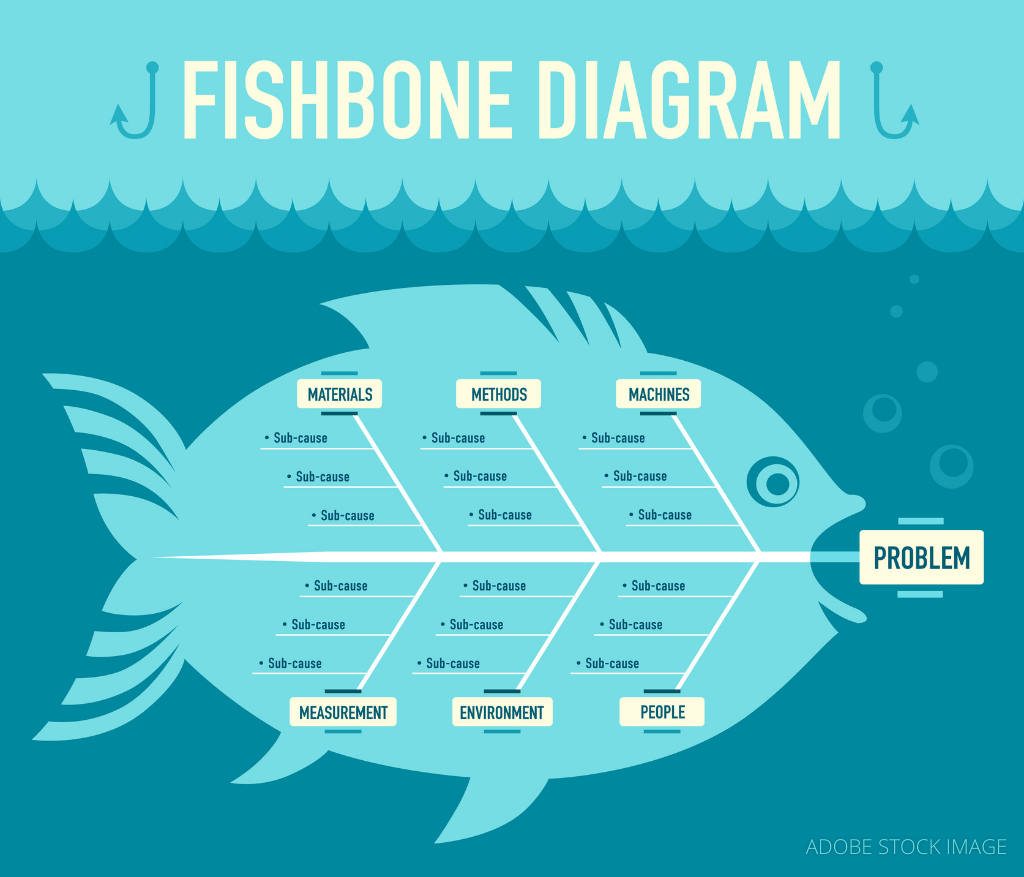
A proactive approach to IT can help organizations streamline processes and deliver a superior digital experience to employees. A good starting point is to make automated root cause analysis (RCA) a foundation of your strategy.
RCA is critical to find and resolve IT issues more quickly, improving the support desk efficiency and, as a result, reducing operational costs and increasing employee productivity. With automation, IT teams can even accelerate their root cause analysis process and remove manual effort.
What’s Root Cause Analysis (RCA)?
Root cause investigation is the process of discovering the source of technology-related issues to solve them. RCA uncovers the source of IT incidents rather than simply treating the symptoms. This approach enables your support desk team to prevent the same issue from happening again.
These are the basics steps in an incident-management workflow:
- Continuously collect data to understand system performance and usage
- Collect details to understand the problem and support the analysis
- Determine the cause and the appropriate solution
- Take corrective actions to fix the problem
- Monitor the situation to ensure the solution was effective
- Document the process, establishing preventive actions to avoid future occurrences of the same incident
How to Perform a Root Cause Investigation?
The RCA process often takes into consideration:
- What happened?
- When did it happen?
- How did it happen?
- Why did it happen?
There are different root cause analysis templates. An example is a cause-and-effect diagram created by Kaoru Ishikawa in the 1960s. It’s also known as the fishbone diagram because it looks like a fish skeleton, where the bones represent possible causes leading to the problem, which is illustrated by the fish head.

Another popular approach is the “five whys” method. This inquisitive model consists of repeatedly asking “why” to each answer received to dig deeper into the cause of an incident.
AI-Driven Root Cause Analysis
Automated RCA uses machine learning and artificial intelligence to automate the incident investigation. This approach relies heavily on endpoint data and smart sensors for quicker incident management.
The use of artificial intelligence and automation in RCA enables IT teams to discover, troubleshoot, and remediate problems faster than they could manually. Organizations can provide support at scale, remediating more issues without requiring more IT staff members. Another advantage is that automated root cause solutions do not rely on the users’ or technicians’ assumptions about the issue. It’s a data-driven approach that drives more efficient processes and accurate results.
How DEM Solutions Streamline Incident Management
RCA is one of the most valuable use cases of digital experience management (DEM) platforms, such as Lakeside Software’s Digital Experience Cloud, powered by SysTrack.
By providing deep endpoint visibility in the IT environment, DEM solutions contribute to more efficient root analysis. According to 66% of IT staff surveyed in Lakeside’s report on the future of digital workplaces, root cause analysis and prevention is also the easiest use case to justify a budget for purchasing DEM tools.
Lakeside’s cloud-based platform shows not only what the problem is, but also why it’s happening. SysTrack’s continuous data monitoring and analysis tools provide the full visibility and context required to find the root cause and fix the issue. The solution also uses automation and artificial intelligence for both identifying and remediating anomalies.
These key features of Digital Experience Cloud all enable effective RCA:
Comprehensive Endpoint Visibility
Detailed endpoint data is critical to identify, understand, and resolve any IT issue. Lakeside’s cloud-based solution collects more than 10,000 metrics every 15 seconds directly from endpoints, giving continuous visibility for IT. This unique viewpoint enables faster anomaly detection, event correlation, and analysis.
Real-Time and Historical Data
The ability to see real-time performance and historical incident details without disrupting the user is equally important for effective problem solving and incident resolution. By having historical data about a device or user, it’s possible to recreate the sequence of events leading to the problem, which is key to faster identification of its cause.
Intelligent Edge Engine
RCA tools also need to understand context, make correlations between events, and draw insights. Lakeside uses machine learning and artificial intelligence to analyze all the collected endpoint data and offer actionable insights into proactively addressing issues. Our intuitive search feature is also powered by IBM Watson.
Lakeside Prevent, part of the Digital Experience Cloud, is a powerful AI-driven application featuring sophisticated sensors that automate RCA to detect and prioritize issues, as well as enable mass-healing and preventative measures. Download this product brief to learn more.
Benefits of Effective Root Cause Analysis Software
It’s crucial to determine the root causes of problems as fast as possible to save time and lower overall costs while also minimizing the impact on the workforce’s digital experience and productivity.
Effective RCA improves the following IT service management (ITSM) metrics:
Reduced Mean Time to Resolution (MTTR)
This metric relates to the average time to resolve an incident between issuing and closing a ticket. Automated RCA enables a quicker resolution of an incident, making the help desk more efficient.
Reduced Downtime and Increased User Satisfaction
The impact on productivity is evident because faster resolution means that employees can return to work sooner, and IT technicians can focus on their next tasks. Service desk efficiency also helps to improve end-user satisfaction.
Reduced Ticket Escalation
Ticket escalation happens when the Level 1 technician can’t resolve the issue and needs to direct it to a senior agent. For most companies, though, having to involve L2/L3 technicians is more onerous. And for the employees, it means they will have to wait longer for a resolution.
Reduced Help Desk Ticket Volume
RCA helps to prevent the recurrence of the same problem in the future. It also enables the discovery of related performance issues that could be fixed before users notice them. Continuous improvement contributes to reducing future support requests.
Automated RCA Enables Proactive IT Operations
According to 92% of the employees surveyed in Lakeside’s report about workplace trends, IT-related problems they have experienced could have been avoided or prevented with the right tool.
Preventing issues from happening — as part of a proactive IT strategy — drives support desk efficiency and a better digital experience. With RCA, IT teams can do more than simply correcting the initial problem. They can also find solutions, whether corrective or preventive, to associated issues.
That has been the case of the consumer products company Mann & Schröder, which turned to Lakeside Software for quicker incident resolution. They wanted a platform that could provide earlier detection of network problems, identify the causes, and prevent them from repeating.
With the Digital Experience Cloud, Mann & Schröder speeded up resolution time, minimized the number of tickets, and improved employee productivity.
“With SysTrack, I have all the essential information on my dashboard, warning about alerts, problems, and allowing a timely response.”
Adrian Dexheimer
IT Department Head, Mann & Schröder
Subscribe to the Lakeside Newsletter
Receive platform tips, release updates, news and more


